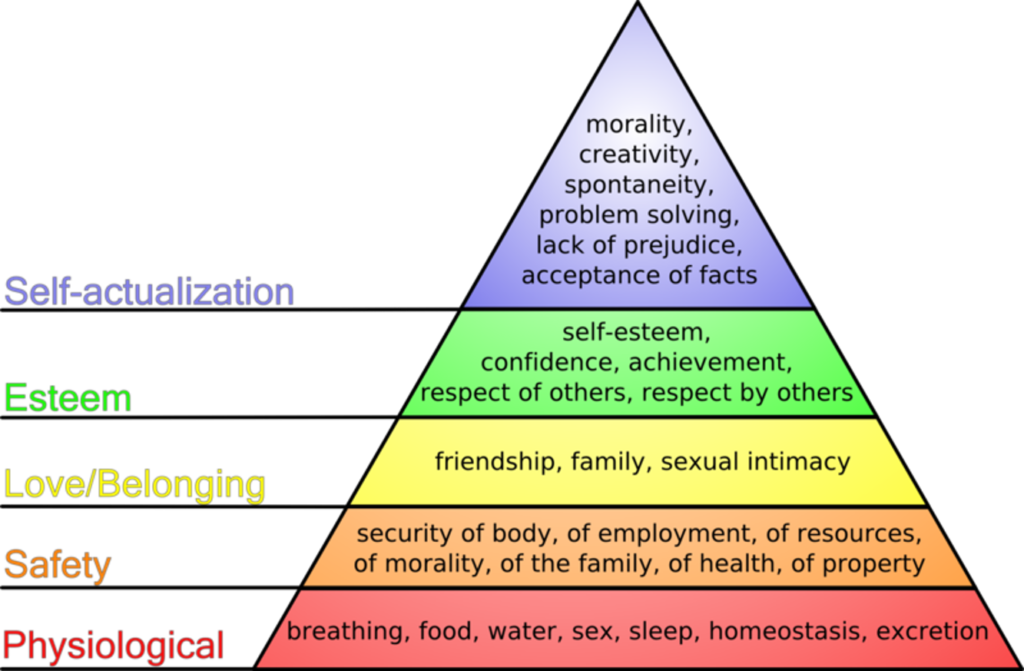Next time you put something in the microwave to cook, thank Percy Spencer.
Spencer was an engineer working at Raytheon trying to develop a better way to detect enemy aircraft during World War II. In working with radio frequencies, he noticed that the device he was building had melted a candy bar that had been in his pocket. That accident developed into the microwave oven.
While Spencer’s discovery may have been an accident, turning the idea into a product and a $10 billion-dollar business didn’t happen by accident. It took engineering skills, business acumen, marketing skills, and the ability to turn an idea into action.
Rarely does success come accidentally. What appears to be luck is almost always the culmination of experience and perseverance. A good idea, without the right nurturing and leadership, is just an idea. To be a success as a leader, you must develop the right mindset to make it happen.
The Perfect Mindset for Success as a Leader
Business leaders often talk about mission statements, vision statements, and goals. While those are important things, developing the perfect leadership mindset for success starts with defining success.
1. Define Success
Will you define success as living the vision? Will you qualify it in stock price, market share, annual sales, net profit, cash flow, or something else? Before you can lead teams, you need to be able to define what success looks like in your business.
Developing the right mindset as a leader means the ability to set big goals for your team to give them a common cause and a way to judge their performance.
2. Take Ownership
Onboard naval ships, the hours of day and night are divided into what are called “watches.” Officers take turns being the “Officer of the Watch”. They’re on duty and in charge. Everything that happens on your watch is your responsibility whether it was caused by you or not. Because you were in charge, you could have taken action to prevent it.
When you are leading an organisation, it’s much the same. You can delegate a lot of things, but you can’t delegate the responsibility of making things happen. Leadership means that you own the outcome whether it’s good or bad. Teams are working at your direction. If they fail, it’s your failure.
When team members drop the ball, you need to help them see where they fell short and determine what steps you need to take to remedy the situation. Ultimately, though, your team needs to see you take responsibility.
3. Project A Positive Attitude
We are all a product of our past experiences. Often, they are failures on the road to success. This can colour our thinking and allow our thoughts to turn negative. Leaders can also be compulsive worriers because they are charged with anticipating problems and proactively finding solutions. It’s way too easy to project a negative attitude towards your team.
Stop.
Focusing on the negative can wire your brain to be pessimistic about everything. This can hurt your health, your relationships, and your business. While it’s important to analyse potential negative outcomes, you need to re-wire your brain to see positive patterns and project a spirit of optimism.
Keep in mind, however, that a positive attitude only works if it’s genuine. If people think you’re faking it, it can erode your ability to lead.
4. Turn Your Thoughts Into Action
All this sounds great, but none of it matters if you can’t turn thoughts into actions.
Once you’ve defined success and set major goals, the next step is to down these goals into actionable components, milestones, and tasks.
How do you eat an elephant? One bite at a time.
I don’t know why anyone would want to eat an elephant, but the old saying is true. We know the best way to accomplish a big goal is to break it down into smaller components. Then, you’ve got a break those components down into tasks. Along the way, you need to define the key milestones that indicate progress and give you a reason to celebrate success on the way to your ultimate goal.
Here’s an example of the leadership mindset.
Let’s say you sell products or services that cost $25,000. To get to $125,000 in sales each month, you’ve got to close 5 deals. Based on your past experience and closing ratio, you know you’ve got to do 20 focused sales presentations to get that many closes. You also know that you’ve got to make 30 cold calls before you get a single appointment to present. That translates into 600 cold calls you need to make every month, or roughly 20 a day.
Your goal is $125,000 in sales, but you won’t get there if you don’t make 20 calls a day. Leaders set big goals and help team members break these goals down into achievable steps.
We’re a big fan of S.M.A.R.T. goals
S.M.A.R.T. = Specific, Measurable, Attainable, Relevant, and Time-Based
5. Praise Genuinely
If you want to get scientific, you can study Maslow’s Hierarchy of Needs. It’s a motivational theory in psychology that demonstrates the impact when people’s needs are met (or not met). Maslow broke down needs into five categories that he expressed as a pyramid. At the bottom or base level are Physiological Needs (Air, Water, Food, Shelter). The next level is Safety (Security, Health, Employment) followed by Love and Belonging (Friendship and Sense of Connection). On top of that is Esteem (Self-Esteem, Recognition, and Status). Finally, at the top of the pyramid is Self-Actualization (Motivation and Self-Direction).

While praising your team may not fulfil their physical need, it hits every other step of the pyramid.
It also helps retain employees. A Gallup poll found 79% of employees that quit their jobs did so because of a lack of appreciation. 82% reported that their managers and leaders didn’t recognise them for what they contributed. 60% said it was more important than money.
This doesn’t mean you ignore problems or heap praise where it’s not merited. It does, however, mean actively looking for reasons to recognise your team and team members and celebrate the successes. Similar to S.M.A.R.T. goals, the more specific you are about your praise, the more effective it will be.
When you tie these praise-worthy moments to meeting steps, milestones, and goals in a positive way, it reinforces the mission and helps build the culture.
Leadership Training Can Help
Developing the perfect mindset for leadership success takes practice and it takes time. If you’ve already mastered these skills, congratulations! If you must change your habits, consider leadership training to accelerate your development. Executive coaching and leadership training are an effective tool to help grow your skills and your organisation.





